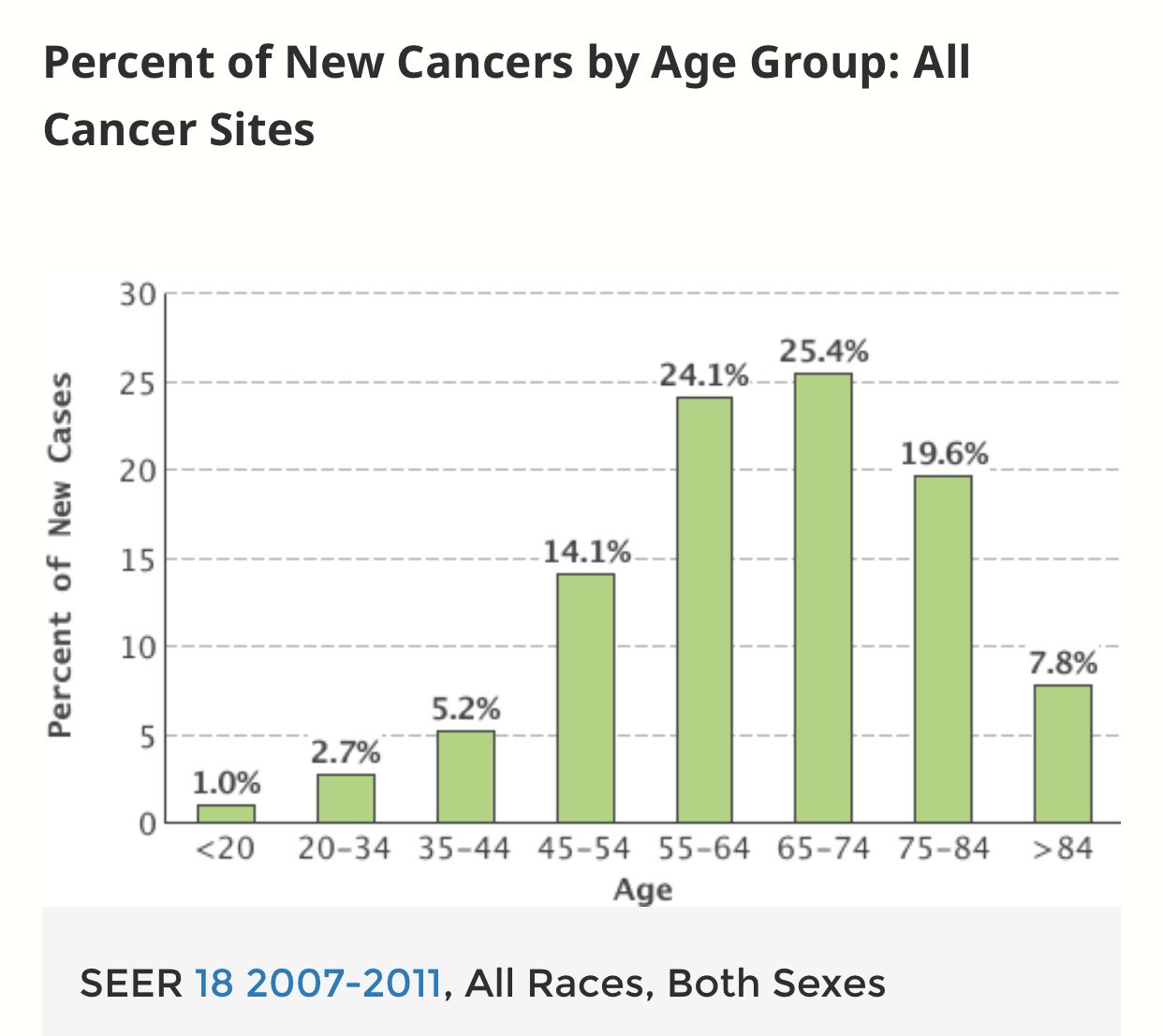Given modern medical advances extending survival rates for chronic diseases like cancer along with the population aging at an exponential rate, companies are seeing opportunities for niche markets. Hormel —of Dinty Moore stews and Spam canned meat fame—has designed its Vital Cuisine meal line specifically to target cancer patients, for example.
This veil of social responsibility manages to obscure what is likely at its core an economic decision. Patients are more and more frequently being managed as outpatients for cancers, so hospitals and long-term care facilities are no longer the only avenue to access them. Enduring chronic illness while living at home and still going to work is very much a realistic portrayal today. These and other trends to be discussed shortly expand the playing field.
In Good News! Dementia Out, Clarity In for the Aging, I reference how the National Institute on Aging (NIA)—an arm of the National Institutes of Health (NIH)— commissioned “An Aging World: 2015” from the U.S. Census Bureau to elucidate further the public health challenges of our aging population. It highlights that America’s 65-and-over population should nearly double in the next three decades, from 48 million to 88 million by 2050. The consequence of this impacts retirement, families, the health care system, life expectancy, morbidity and mortality, pensions, housing, transportation and countless societal realms.
Hormel is hoping to capitalize on this trend. According to the National Cancer Institute, “Advancing age is the most important risk factor for cancer overall, and for many individual cancer types.” In their below graphic, new cancer diagnoses are mapped with age.

Hormel launched the Vital Cuisine meal line last year. As per a NY Times article on this company move— visible on their website, “The company…is promoting microwavable meals it says caters to people who are going through chemotherapy and are sensitive to certain tastes. Its Vital Cuisine meals…are also marketed as delivering the nutrients and convenience people might want if they’re too exhausted to cook or leave the house for food.” The read goes on to acknowledge patients might prefer ordering from a restaurant where the food is suitably nutritious. It further includes Hormel’s pureed foods geared toward the elderly and those with swallowing impairments.
A CBS News report on the plan details a Q&A with the head of Hormel’s specialty foods group, Don Kremlin. Mr. Kremlin discusses the cautious roll out of the line extending beyond hospitals, nursing homes to direct-to-consumer approaches (think Amazon). He goes on to affirm the pivot beyond cancer patients to the elderly, in general, while reiterating their brand is a protein company.
Why emphasize they are a protein company? Branding Hormel as such plays on two crucial notions surrounding those with chronic disease like cancer. First, because patients become immunocompromised with treatment as well as disease having protracted periods of inactivity and weight loss or atrophy, they have a tendency to become protein deficient. Second, poor protein reserves poses challenging for optimal wound healing.
Their Vital Cuisines line includes protein shakes and whey powders. You get the picture. However, they do not necessarily represent the only or ideal means for repletion.
So, what’s the deal…
Protein shakes are no new invention. In certain situations, they can lead to food aversion behaviors which is why shakes are no panacea. Additionally, those bodily protein and other stores can be built up through a variety of nutritious options with the challenges being the underlying clinical status of the patient as well as identity and severity of disease. Also, individuals are impacted differently from chemotherapeutic agents and the accompanying drugs they take.
One universal mode of nutrition replacement will unlikely suit the majority of scenarios.
Where one person is averse to a certain food, another is not and might never be. What food is tolerated can be cyclical and dynamic too. Depending on the person’s level of illness and impact, an emphasis on caloric intake may be more meaningful to boost their reserve— and, at times, however that can be best and consistently ingested might trump the healthiest quality of the meal.
The deal is cancer patients respond differently to chemotherapeutic agents. Regimens vary depending on the etiology and extent of the cancer. Some types of disease along with medications may impact digestion more than others. Depending on where radiation is administered, in one patient swallowing can be affected and in another a limb. Hence, why one-size-fits-all nutrient repletion is problematic.
Chemotherapies are not interchangeable nor are their effects. For instance, those on oxaliplatin — a drug used for colorectal or gastointestinal cancers in combination with other agents—can in rare instances experience swallowing problems and strange tongue, throat and chest sensations within hours of infusion and upon exposure to cold—albeit opening a refrigerator, ingesting a cold substance or stepping outside in winter. Other agents don’t carry a concern for cold items.
Those enduring a stem cell transplant for blood cancers often experience a period of a few months where they are advised not to eat out, since they are at increased risk of acquiring infections and have to follow strict parameters of how food must be prepared and at what temperatures. Food borne illnesses can be catastrophic for this group in particular.
Memorial Sloan Kettering Cancer Center provides a wonderful patient resource that underscores the complexities of changing food tastes and the many ways to combat them, see Eating Well During and After Your Cancer Treatment.
In conclusion…
The idea of making foods for those with chronic disease is a noble one. Not everyone has caretakers to optimize their well-being and provide immense support. Being properly and well nourished is essential to survival. Quick and easy solutions are wonderful endeavors to focus on for this population, especially as an option for those really bad days.
From the reported stories on Hormel’s line, the executives maintain the goal is to see if this is a valuable service and if the market responds favorably. They affirm the company’s head is not driven by profit with respect to the Vital Cuisine line, but performing a public good. In the end, if a patient — who has discussed this choice with their physician who is fully informed about their individual limitations and requirements to determine if it is a safe, purposeful option —finds these products of use, then it is a positive result.
The good news is there are many ways to enhance the well-being of a patient who is battling cancer. Prioritizing what works for that person is of the greatest import— whether it be Hormel or an alternative.



